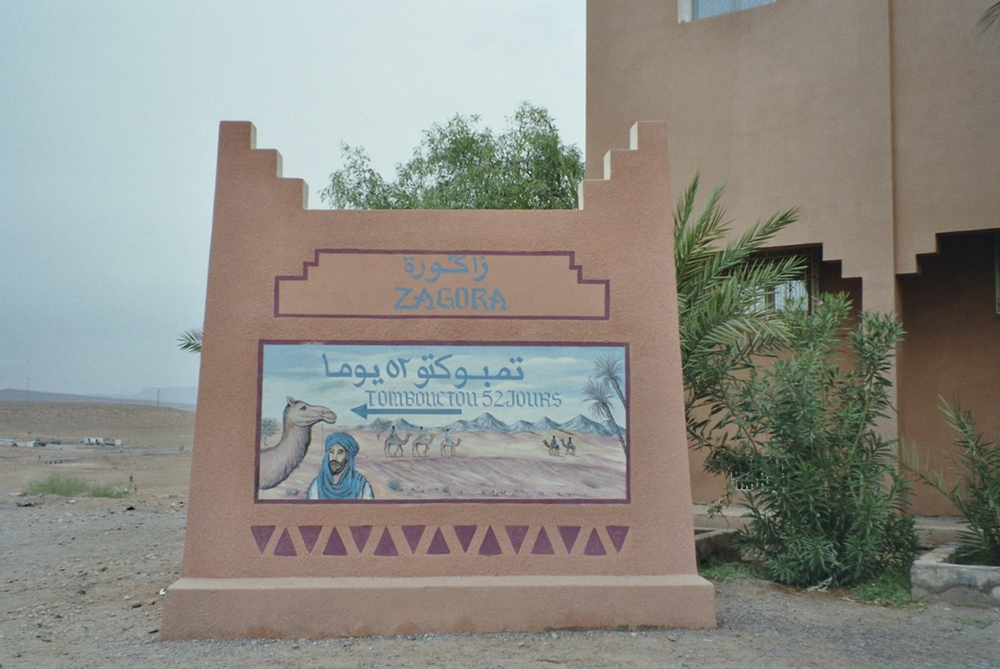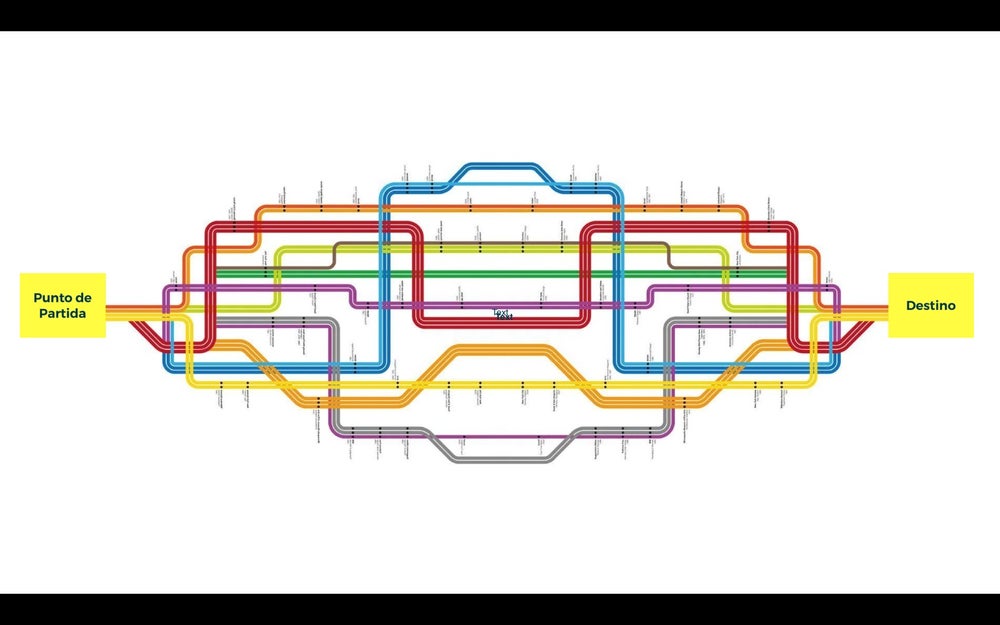June
1, 2021
8 min read
Opinions expressed by Entrepreneur contributors are their own.

We had left Ouarzazate, a city in southern Morocco, when it was still dark. We traveled through the Draa Valley, surrounded by reddish mountains and dotted with small oases, for more than 150 kilometers until we reached Zagora -the last city before the Sahara desert-, and had a coffee in the only bar open at that time in the morning. main street -Avenue Mohammed V-, before embarking on the second part of our trip of more than 3 hours, towards the dunes of Edaya el-Hamra.
It was already dawn when we left Zagora, we crossed the dry wadi and passed in front of the famous sign (which is actually a copy of the original), which bears a text in Arabic and French that says: “Timbuktu, 52 days” , declaring the necessary time to get to that city on the other side of the desert on foot or by camel .

Image: Massimo Martinotti
For centuries camel caravans (or rather, dromedaries) left this place, as well as Sijilmasa, heading south. Obviously these were expeditions full of risks, which had to be prepared with great care and precision. The dromedaries were fattened in the pastures of the surrounding oases for months so that they could face the journey and survive on the journey, and all the goods that came from Europe or North Africa were ready to be transported to the sub-Saharan region. The caravans, which according to the fourteenth-century Moroccan explorer, Ibn Battuta, could have over a thousand dromedaries, would return loaded with salt and gold. It was a complex logistics.

Image: Depositphotos.com
Travel has fascinated humanity for thousands of years and stories have always been mental substitutes for actual travel. Each story consists of a psychological journey of the characters who, through their adventures, pass from one state to another. At the same time, the recipients of the stories must accompany these characters on their journey and, where possible, share their motivations, fears and dreams and, above all, the desire to reach a common destination.
Destiny takes on an important role in each trip, real or figurative, and for this reason, those cities that for millennia have constituted the epilogue of heroic journeys, have assumed legendary and epic characteristics. Thus, places like Timbuktu, in Mali; Samarkand, on the silk road; or Santiago de Compostela, at the end of the Camino de Santiago; they have become mythical and have forged legends.
The history of your project
When you start to build the story of your project, venture, brand or company, you should do it as if you were organizing a trip. Therefore, you have to establish where you are, where you want to go and what the route is going to be.
To do this, I recommend using a sheet of paper as large as possible to put together the map that, like all trips, your story needs.
On the left side of the paper you have to define the starting point of the story: the current position of the brand or the project that is based on the market situation, the historical background and the perception that all audiences, from collaborators to clients, have the products or services that your company offers or provides.
On the right side of the paper (leaving a lot of white space in the center) describe the destination of the trip. It is the point where you want to get to and determines the purpose of the story you are going to tell. Think that all stories are a journey that produces a transformation from one state to another, higher and more satisfying, from a condition of low self-esteem to one of greater personal fulfillment. In Beauty and the Beast, the monster turns into a prince and in Cinderella, the poor abused girl turns into a princess. In the same way the Little Mermaid transmutes into a young woman, the Ugly Duckling into a swan and Pinocchio into a real child. This transformation must take place both in the organization and in its audiences.

Image: Massimo Martinotti
For example, thinking of your collaborators, what transformation should your story produce for them? Make them feel the pride of belonging to the company? Give them your passion and your higher purpose? Help them overcome some type of insecurity or uncertainty ?
And in your clients and consumers, what is the transformation you want to produce? What do they realize about the difference of your products compared to those of your competitors? What do your services adopt to improve their lives? change their opinion of a certain category of products?
Once you have defined the starting and finishing point, you must define the route. And that’s the really complex part of this exercise. It’s as if you had the opening and ending sequences of a movie, but the two hours in between are missing: that’s the time when the narrative becomes interesting and the characters show their mettle.
The itinerary from one place to another is rarely a straight line. If we use Google Map, to find the course between two cities, such as Puebla and Veracruz, we find that there are several alternative roads, but they all involve multiple deviations due to mountains, valleys, rivers and canyons that prevent proceeding in a straight line. Often, too, to go from one place to another, there are different alternatives of means: to go from Madrid to Lisbon, you can use the plane, the car or the train (the legendary Lusitania that has recently stopped operating).
Use the white area of the paper between the starting point and the destination to describe the steps that are required for your collaborators or your clients to accompany you on your trip, and the narrative elements that you must use to guide them: advertisements, videos on social networks , experiences, new products, etc.
Like a car trip, involving stretches of freeway, stretches of back roads, stops to refuel, detours for meals, and even a stop to fix a flat tire, a narrative journey is constructed through many elements and many phases. A story, to lead audiences on an emotional journey between a starting point and a destination, must overcome all kinds of situations that will inevitably occur. And this happens because the history of your organization will have to compete, over time, with many other stories, some of which will be antagonistic to yours.
If, as we saw a moment ago, our objective is to promote the employees’ sense of belonging to our company, what do we do and what story do we tell if we lose our main client, who represents 40% of our sales and we have to reduce staff ?
If the goal of our story is for consumers to adopt our products, what do we do if the competition lowers their prices or launches a product with significant innovation?
In that large white space in the center of the paper, write down all the transformation steps you want to produce in your own organization, as well as in all your audiences. Write down all the possible circumstances that may arise along the way and determine how you are going to respond to all of them.
Try that your story is not rigid but that it can be adapted to the situations that arise without losing its essence and that of your organization. Your story should be like a reed that can be bent if necessary without breaking and represent the values of your project over time.
Never forget your destination: like Ulysses in The Odyssey whose objective was to reach Ithaca, you have a course that you must follow, even if on the road there is, from time to time, to take a detour.



